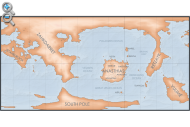Handfruit
Handfruit are carpel-like growths of the handfruit bush, a viridplugin-autotooltip__small plugin-autotooltip_bigVirid
Referring to the Virid Kingdom of flora and fauna, toxic to human life. plant native to virid jungles in the southwest of Anásthias.
Floraplugin-autotooltip__small plugin-autotooltip_bigFlora
Topics related to herbs, crops and plantlife.
Subcategories
Articles
All
Green Flora
Virid Flora
topics sci1
 plugin-autotooltip__small plugin-autotooltip_bigHerbs
plugin-autotooltip__small plugin-autotooltip_bigHerbs
A list of green plants used in herblore for their culinary, medicinal, psychotropic or physical properties.
Herbs
herbs
This is in a series of articles about Herbs and Herblore.
topics flora1
This is in a series of articles about Plants and Floraplugin-autotooltip__small plugin-autotooltip_bigFlora
Topics related to herbs, crops and plantlife.
Subcategories
Articles
All
Green Flora
Virid Flora
topics sci1.
They produce a composite body with multiple “fingers”, often fused together with the outer ones curled and the central fingers erect. They were adopted as a symbol of the Mother Churchplugin-autotooltip__small plugin-autotooltip_bigMother Church
The Mother Church of Ororr, also known as Therism. in the fifth century MEplugin-autotooltip__small plugin-autotooltip_bigME
ME is short for Modern Epoch, the modern method of numbering years., symbolising a fusion of human form and virid plant. They are a common feature in temple gardens or pandatas, and representations of them are common in Theristplugin-autotooltip__small plugin-autotooltip_bigMother Church of Ororr (Therism)
The Mother Church is the state religion of Ororr, which combines both religion and government in one institution. It is based on the teachings of the Great Prophet Therion, who in the early decades of the modern era raised an army that conquered much of northwestern OrorrOrorrOrorrOrorrOrorrMEMEOrorrMEMEOrorrOrorrHerHerHerHerHerHerHerHerHerher painting and sculpture. Double-handed varieties are the most prized, since they replicate the Therist prayer pose.
The “hands” are naturally a yellow or purplish colour, but have been selectively bred for their size, shape and colour, red being the most popular variety. Botanically they are not fruit at all but a means of attracting insects and small animals to a pocket in the “palm” of the hand, containing seeds.
They are edible to some virid animals but mildly toxic to humans.






